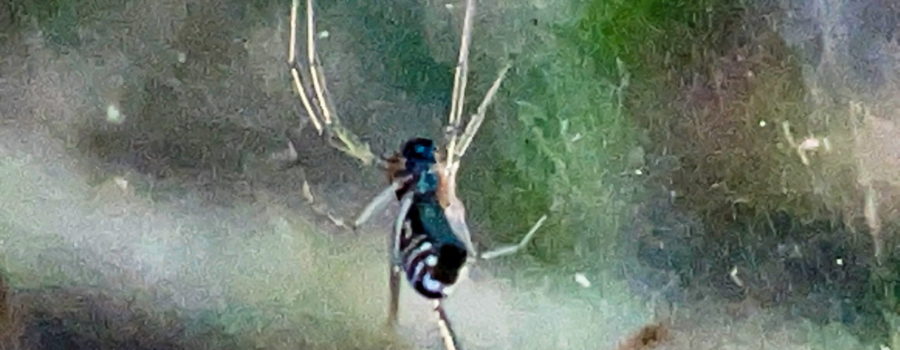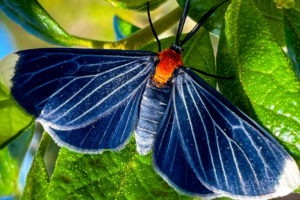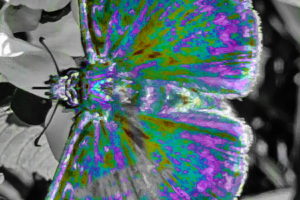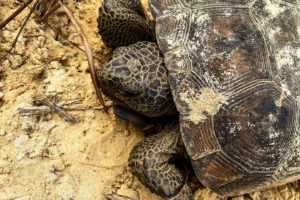The Bowl and Doily Spider has an Interesting Way of Hunting

Walking around the yard with the dogs last week, I found a new spider! Actually, I had found one last summer, too, but the photos I took were not good, and I wasn’t even totally sure about my identification. The identification I did make was based more on the style of the web than the spider itself (you’ll see why shortly). So what is this spider? It’s a bowl and doily spider. They are a member of the sheet web weaver family and are found in a good bit of the United States, Mexico, and into Central America.

These spiders are pretty cool because they capture their prey in a rather unusual way. They are a very small spider, so stalking prey or actively hunting is difficult for them since some of their prey is bigger than they are. Instead, they build an intricate web that is made up of two parts. The top layer is a pretty tightly woven sheet that is somewhat concave instead of being completely flat. This sheet is the bowl. The bottom part of the web is more delicate and more loosely woven. That part is the doily, and it is where the spider lives. The web itself isn’t sticky like some spider webs are, but the tight weave of the bowl helps to trap small flies, gnats, and mosquitoes that fall into it. The concave shape also helps to hold them in the web. When the prey falls into the bowl, the spider comes from underneath and injects it with venom.

Interestingly, males of this species don’t build webs. Instead, they will “move in” with a female and the length of time that they stay depends on several factors. If a female has her web in a good spot for prey capture, there may actually be several males in the web with her. This is more common later in the spring and into the summer since that is the mating season. Female bowl and doily spiders, unlike the orchard web weavers, do not kill and eat their mates, and they may mate with more than one male. Similarly, males will often mate with multiple females. This time of the year, most of the webs, including the one I found, are only inhabited by one female spider.

One of my main rules when trying to photograph any type of wildlife, is to not be disruptive to them. That rule and their web design makes these girls a bit difficult to photograph. They are so small that to get a decent photo you really need a macro lens, but because they like to hang out in the bottom part of the web, it’s hard to get close enough with a macro lens without damaging the web. I lucked out last week because the spider was on the bottom of the bowl (not down in the doily) waiting for something to fall into it. I did jiggle the web a little when I first got there and that may have brought her up. She may have been thinking the movement was caused by prey in the web. Maybe that’s the key to getting pictures of these little beauties. Have any of you had any experience photographing these spiders?





Recent Comments